History of HBZS Ostrava
1897
The Mining Board in Vienna issued Special Order No. 692/1897 "aimed at ensuring the protection of persons and property in the event of an explosion of flammable gases or coal dust".

Regenerative breathing apparatus Dräger 1903 Germany
1905
By the order No. 3228/1905 of the same Mining Board it was ordered to equip miners on mining floors with breathing apparatus, to subject miners assigned to the mining rescue service to regular medical examinations, etc. At the same time, the regulation also recommended that the rescue corps of individual mines be grouped into common corps. This regulation gave the first impetus to the creation of higher type mining rescue stations. The regulation also remembered the readiness of mine luminaries.
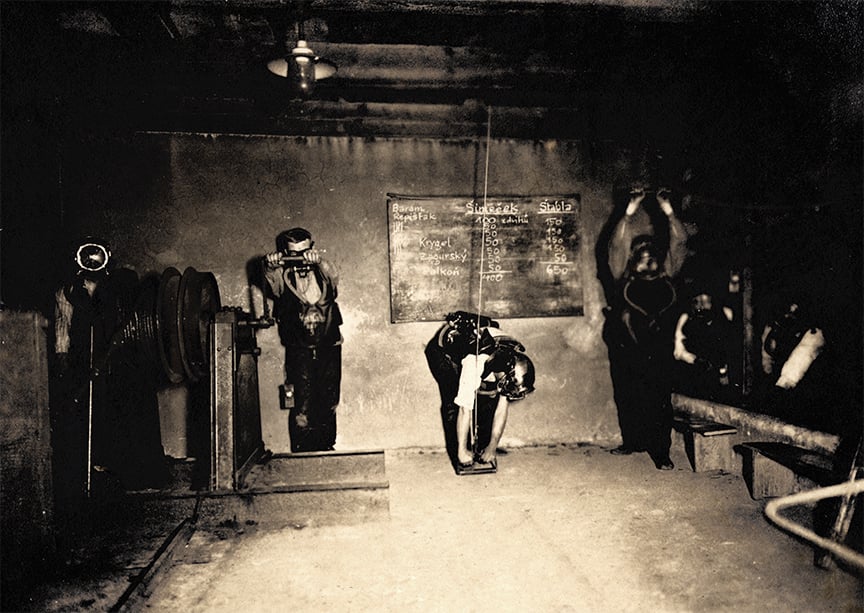
Schaft Vilém, platoon of rescue station Zárubek, training in smoke chamber, 1990
1908
The Central Rescue Stations (CRS) as well as underground rescue stations were established by order of the Mining District in Vienna.
1911
The first officially approved Central Rescue Station was established in the OKR of the Ferdinand Northern Railway mines at Zárubek (closed on 1 November 1946).
1912
The Central Rescue Station of the Count Wilczek Mines at Trojice was approved (abolished in 1939).
1914
The Central Rescue Station at Lazy was approved, the first station in history to be established regionally, regardless of ownership. The building served the mining rescue service until 22 May 1979.
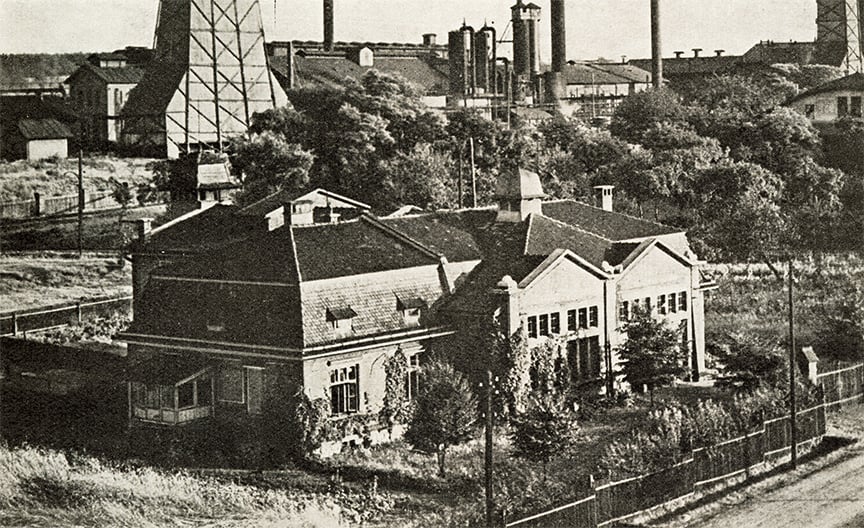
Central Rescue Station Lazy
1943
Order No. 290/1943 of the Ministry of Economy and Labour on the organisation of the mining rescue service in mining plants unified the requirements for the performance, system and equipment of mining rescue corps and stations throughout Bohemia and Moravia. The Anselm and Oskar mines were located in the territory of the then Great German Empire and were provided by the Central Rescue Station at Hlubina.
1950
A decree of the Ministry of Industry established a unified mining rescue service with a three-tier organisation HBZS - ÚBZS (in 1961 their name was changed to OBZS) - ZBZS. Two HBZS were established, one in Most with the area of competence in Bohemia and the other in Ostrava for the territory of Moravia, Silesia and Slovakia (in Slovakia the HBZS was not established until 1 January 1960).
The HBZS Ostrava was established by the then OKD and had its own Rules of Organisation.
1951
A government document on measures to increase mining and productivity in the OKR was issued, on the basis of which, in addition to the HBZS Ostrava, 4 more platoons were put on standby at the ÚBZS Lazy and 4 platoons at the ÚBZS of the General Svoboda mine in Ostrava Přívoz. Thus, the mine rescuers' standby force consisted of twelve platoons in total.
1957
By Order No. 9 of the Minister of Fuels, professional mining rescue corps were established on 1 August 1957, first at the HBZS in Ostrava Radvanice and the ÚBZS in Lazi Lazy, later at the HBZS in Most and then at the uranium mines.
1959
The world's first signed intergovernmental agreement on mutual assistance in the field of mining rescue services between the Czechoslovak Republic and the People's Republic of Poland, which is still in force.
1961
After the accident at the Dukla mine (108 victims), permanent rescue patrols were established at OKR plants and subsequently in other districts. These patrols of three to five men were fully equipped to intervene and were located directly in the mine.
1963
By Order No. 16/1963 of the Minister of Fuels, 8 rescue crews, i.e. at least 40 rescuers, were set on permanent standby for the HBZS in Ostrava.
1966
HBZS Ostrava became an independent OKD plant.
1970
At the Jan Šverma mine in OKR, a separate emergency unit of 1 platoon was set up; later, the Paskov, Staříč and Rudý říjen mines (mines with the danger of coal and gas bursts) were also provided with permanent emergency services.
1976
HBZS Ostrava became a special-purpose organisation within the OKD Group.
1979
HBZS Ostrava (including the workplace in Lazy) moved on 22 May 1979 to the newly built premises in Radvanice, Ostrava, where the company's headquarters remain until now.
A multilateral global open agreement on mutual assistance in the field of mining rescue services has been signed and is still in force.

HBZS area
1988
Pursuant to the Act of the Federal Assembly of the Czechoslovak Socialist Republic No. 44/1988 Coll., On the Protection and Utilization of Mineral Resources, and subsequently by the Act of the Czech National Council No. 61/1988 Coll. is, for the first time in history, ordered by law the establishment of a mining rescue service and its basic functions.
1992
By Decree of the Czech Mining Authority No. 341/1992 Coll., a new legal regulation comes into force, which abolishes the three-tier organisation of the mining rescue service, changes it to a two-tier organisation (RBZS - ZBZS) and changes the original name of the main mining rescue station to the district mining rescue station. A third tier of rescue legislation is also introduced, namely the Staff Regulations for Mining Rescue Stations.
1993
Operation of the central nitrogen management started. A 30 km long pipeline supplies the mines in the Ostrava-Karviná district with nitrogen gas supplied by MG-Odra Gas. The central nitrogen system operates in a preventive mode of approximately 8,000 m3.h-1 and is capable of supplying up to 18,000 m3.h-1 for 10 hours in repression, thus essentially replacing the use of steam-gas generators.
1994
On 6 January 1994, OKD, District mining rescue station, a joint-stock company (as the only one in the Czech Republic) was established.
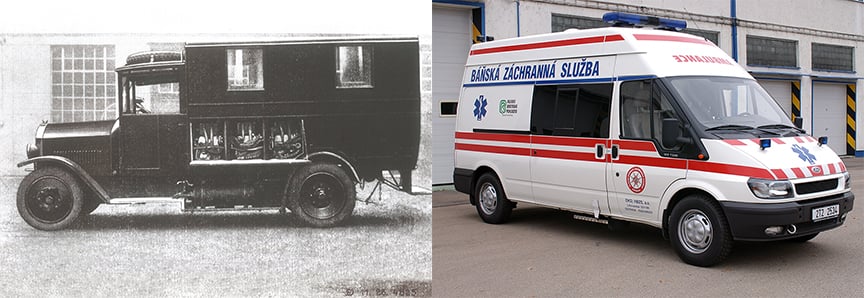
Ambulances in the early and late 20th century
2001
The International Mining Rescue Body (IMRB) is established. One of the founding members was OKD, District mining rescue station, joint-stock company.
Act No. 315/2001 Coll. amended Act No. 44/1988 Coll. and Act No. 61/1988 Coll. This amendment brought, among other things, a change of name from the district mining rescue stations to the main mining rescue station.
The Commercial Register of the Regional Court in Ostrava has newly registered the company OKD, HBZS, a.s.
A new Decree of the Czech Mining Authority No. 447/2001 Coll., on the Mining Rescue Service, was issued.
2002
With the issue of Act No. 206/2002 Coll. of 24 April 2002, the Mining Rescue Service became one of the mining activities within the meaning of Act No. 61/1988 Coll., on Mining activities, Explosives and State Mining Administration.
2003
Opening of a separate exhibition of mining rescue in the area of the former Anselm Mine in Ostrava-Petřkovice. The exhibition, which in the new millennium recalls not only the legacy of the history of mining rescue, but also proves the many years of dedicated work of mining rescuers.
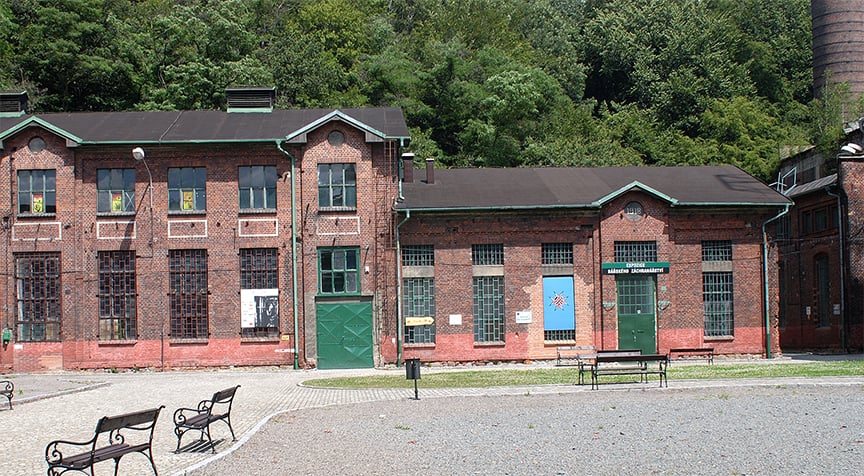
Mining rescue exhibition in the Landek Mining Museum
2007
EKO - KARBO (ash mixture storage) merged into OKD, HBZS, a.s.
Lamp plants at individual OKD mines became an integral part of HBZS.
2009
IMRB - the 4th International Conference of Mining Rescue Services took place in Ostrava with the participation of 140 delegates from 20 countries.

Demonstration of the technique within the IMRB conference and the logo of the Ostrava conference
2014
After 48 years, the operation of the BG-174 work breathing apparatus (the best breathing apparatus in the current history of mining rescue) ended at the end of the year.
2015
This year, the breathing equipment of the mining rescuers in the OKR was completely renewed. All ZBZS are equipped with Dräger PSS BG-4 working breathing apparatus (since 2006 used in accordance with the new European standards for long-term interventions).
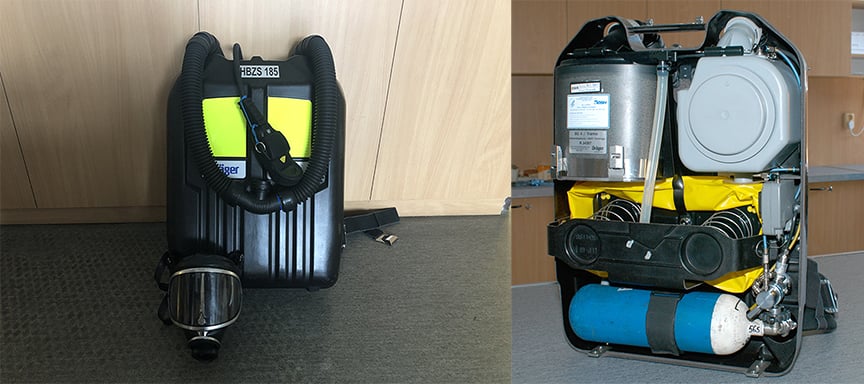
Dräger PSS BG-4 self-contained breathing apparatus
2020
On 1 December 2020, part of the OKD plant, HBZS, a.s., was sold to the state enterprise DIAMO and the Main Mining Rescue Station in Ostrava thus became a branch of the state enterprise DIAMO.

 Česky
Česky
